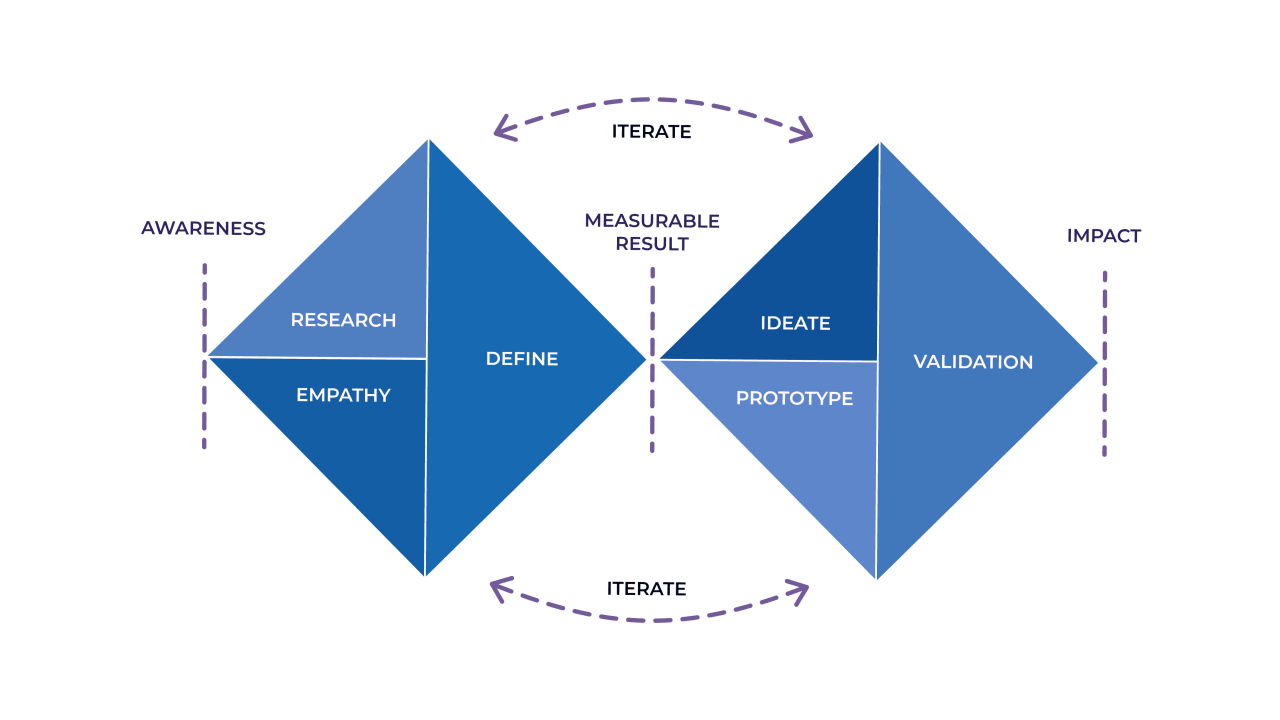When it comes to Iterative design, we know that it is a verified method for optimizing the usability of a product or service. Teams create prototypes, test them with users, find issues, and fix them. However, the iterative design does not ensure innovation in the product. To develop innovative designs, we need to question how we have articulated the problem and instead focus on our users’ underlying needs.
The twenty-first-century organization managers always suggest that the product must be innovative, creative, and customer-centered.
Senior executives implore their team to get out of the building. Other departments try to create new environments for employees by providing new things in the office like game rooms. Teams install whiteboards and plaster them with a lot of sticky notes and different kinds of diagrams.
Then the work starts. Users are selected for the research. Customer conversations are analyzed, interpreted, and then presented as fundamental truths. Iterative design and usability testing have become a new habit of designers. Teams adopt an iterative development methodology like Scrum. Furthermore, the benefits are immediate. Week by week, products get better. It seems to work.
However, a startup appears, disrupts the industry, and changes the game’s rules.
Iterative design can be misleading. It does a great job of delivering incremental improvements. Those improvements build upon each other after each iteration.
But iterative design is not enough.
We end up with incrementally better versions of the same product. What if we need an entirely different product? How do we genuinely innovate?
In 2005, the UK’s Design Council introduced a design process known as the Double Diamond.17 Divided into four distinct phases (Discover, Define, Develop, and Deliver), the model maps the divergent and convergent stages of the design process, showing the different modes of thinking that designers use.

At first glance, this may feel like a familiar process to all of us. However, if you ask many development teams, you will find out that they do not spend much time in the Discover phase of this model (where they understand how users solve the problem now) or in the Define phase (where they decide on the user need they will serve).
Nevertheless, in these two areas, teams have the best chance of innovating and creating a great user experience. Rather, teams rush to optimize the usability of a solution based on pre-conceived concepts before they have adequately explored their users’ goals, needs, and motivations.
This is a common problem in Scrum organizations because managers want to see developers developing. However, exploration is critical to innovation because you will never iterate toward a transformative solution. If you start with a website and iterate, you will end with a website.
It may be the best possible website, but it is still a website. To be truly innovative, we need to spend serious time in the Discover and Define phases to collect relative ideas; we need to create innovative resolutions in the Develop and Deliver phases.
Teams are not always aware that they are making this mistake because they explore alternatives later in the Develop phase. In this phase, teams run usability tests of prototypes and modify the designs based on the results.
It is easy to mischaracterize this kind of iterative design work as Discovery and Definition




